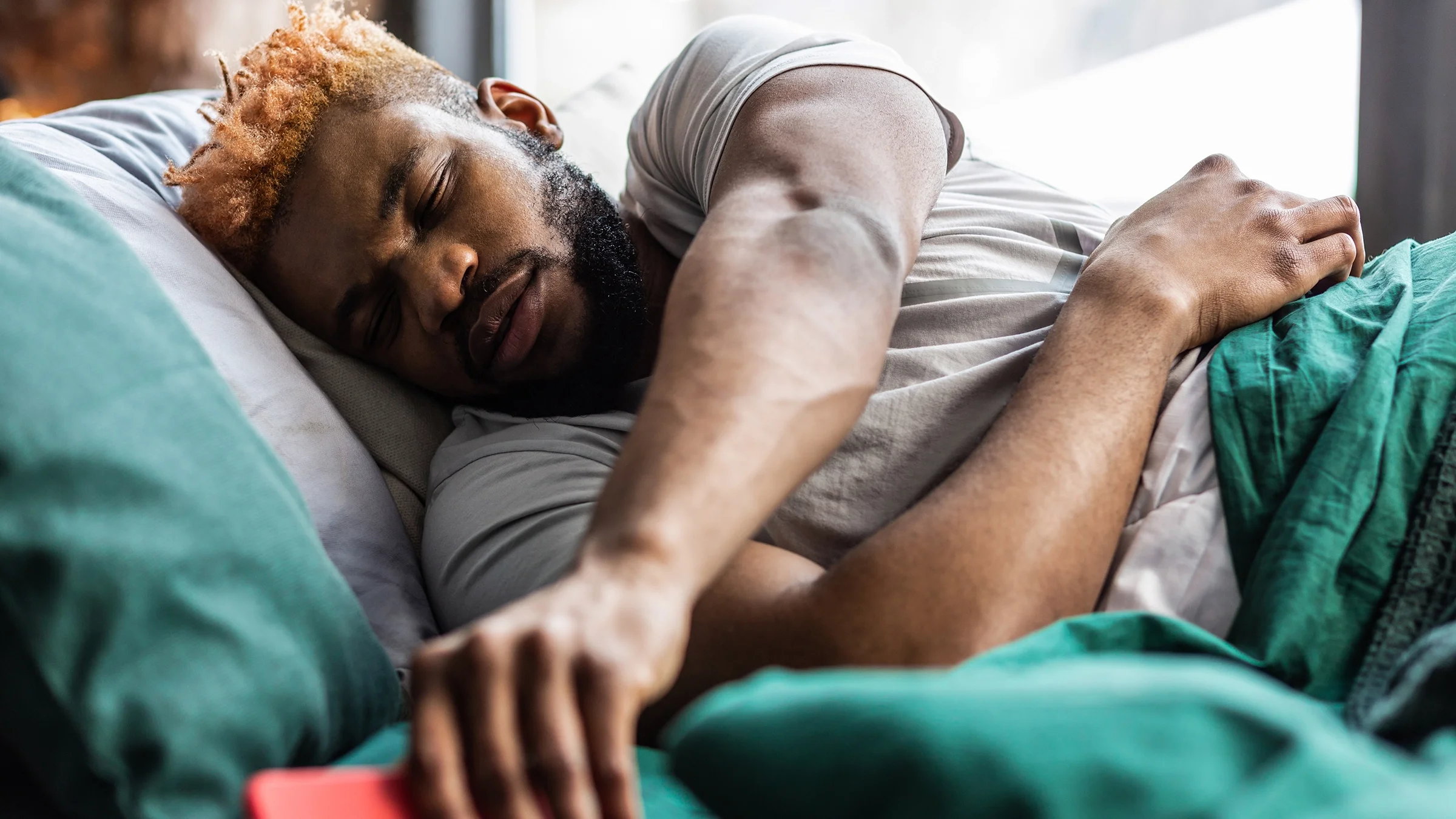Key takeaways:
Idiopathic hypersomnia is a rare but underdiagnosed sleep disorder. It causes daytime sleepiness and trouble waking up.
It’s not clear what causes idiopathic hypersomnia, but some researchers think it could be linked to an autoimmune process.
There’s no cure for idiopathic hypersomnia, but treatment can lessen symptoms and improve daytime alertness.
About 1 in 7 adults in the U.S. report trouble falling asleep. But what if you have the opposite problem? Some people have no trouble falling or staying asleep. This doesn’t always mean they’re getting restful, quality sleep though. If you’re always sleepy, even after a full night’s rest, idiopathic hypersomnia could be to blame. Here’s what to know about this rare but underdiagnosed sleep disorder.
What is idiopathic hypersomnia?
Idiopathic hypersomnia is a sleep disorder. People with idiopathic hypersomnia can experience a wide range of symptoms.
Excessive daytime sleepiness
People often feel very tired during the day and find themselves falling asleep at inappropriate times, like while sitting in class or at work. Excessive daytime sleepiness is the most common symptom of idiopathic hypersomnia.
Search and compare options
Sleep drunkenness
People with idiopathic hypersomnia have trouble waking up in the morning, even if they got plenty of sleep the night before. They may also sleep through their alarms (and back up alarms). Often, they feel groggy or confused when they first wake up. This is sometimes called sleep drunkenness or prolonged sleep inertia. Although it can take time for most people to get going in the morning, people with idiopathic hypersomnia need more time than usual to feel fully awake. This can make it difficult to get to work, school, or events in the morning.
Brain fog
People with idiopathic hypersomnia have trouble concentrating or focusing because of their excessive daytime sleepiness. This can interfere with work, activities, and schoolwork. It can also impact relationships.
Lengthy sleep times
People with idiopathic hypersomnia often sleep for long stretches of time. Many people sleep longer than the typical 7 to 9 hours a night. They often take long naps too.
People with idiopathic hypersomnia are still tired despite sleeping for long periods of time. This is because their sleep isn’t restorative, so their brain and body don’t feel recovered after a night’s rest. These sleep patterns can take a toll on people’s mental health, work performance, and relationships.
The right sleep strategies can help with idiopathic hypersomnia. Here are our top tips to perfect your sleep hygiene.
Sleep studies can help diagnose idiopathic hypersomnia. Here’s what to expect during a sleep study.
Can’t find a sleep specialist in your area? Telemedicine can help you find the care you need.
Idiopathic hypersomnia vs. narcolepsy: What’s the difference?
Idiopathic hypersomnia and narcolepsy are both sleep disorders. They’re similar in some ways. People with idiopathic hypersomnia and narcolepsy experience excessive daytime sleepiness, which makes it harder for them to stay awake during the day.
But people with narcolepsy experience additional symptoms like:
Cataplexy: Attacks of sudden loss of muscle tone and strength
Sleep paralysis: Being unable to move or speak when you first wake up
Hallucinations: Seeing or hearing things as you fall asleep or wake up
Automatic behaviors: Performing behaviors like driving without being aware or knowing how you got somewhere
Read more like this
Explore these related articles, suggested for readers like you.
People with idiopathic hypersomnia don’t experience these symptoms. They may also sleep for longer stretches than people with narcolepsy.
Is idiopathic hypersomnia considered an autoimmune disorder?
Maybe, but it’s not clear what causes idiopathic hypersomnia. In fact, the term “idiopathic” means that the cause is unknown. Idiopathic hypersomnia means symptoms aren’t caused by things like:
Medications
Medical conditions
Mental health conditions
Brain injury
Other sleep disorders
Breathing disorders, like obstructive sleep apnea (OSA)
Idiopathic hypersomnia is considered a central disorder of hypersomnia. Researchers have uncovered abnormalities in some of the normal processes and pathways that control sleep, for example:
Levels of the natural chemicals that regulate sleep
How the brain communicates with the body about sleep and wakefulness
How the brain communicates with itself about alertness and sleep
The circadian rhythm (“internal clock”)
But it’s not clear why this happens. It’s possible that idiopathic hypersomnia could be inherited. It’s also possible that it could be caused by an underlying autoimmune process. And evidence suggests that people with idiopathic hypersomnia are more likely to have other sleep disorders and higher rates of autoimmune conditions within their families.
There’s some other evidence that links idiopathic hypersomnia to autoimmune conditions, too. Some people have developed idiopathic hypersomnia after viral illnesses — a typical way for some autoimmune conditions to develop. This happens because a viral infection triggers the immune system to attack healthy cells within the body.
So it’s possible that idiopathic hypersomnia could be an autoimmune condition, but more research is needed to know for sure.
What is the Idiopathic Hypersomnia Severity Scale (IHSS)?
The Idiopathic Hypersomnia Severity Scale (IHSS) is a validated tool. It was developed to measure symptoms and experiences related to idiopathic hypersomnia. It’s an important tool that can help diagnose idiopathic hypersomnia.
There are other validated questionnaires that can measure sleep-related symptoms. The Epworth Sleepiness Scale is an example. But these tools weren’t developed specifically for idiopathic hypersomnia and may not catch everyone with the condition.
Studies show the IHSS better captures the severity of idiopathic hypersomnia symptoms and the impacts of these symptoms on people’s lives. You can view the IHSS for free. But if you choose to complete the test, make sure to discuss your results with a sleep specialist. You’ll need more testing to confirm that you have idiopathic hypersomnia and not another condition that’s affecting your sleep.
What are the treatment options for idiopathic hypersomnia?
There’s no cure for idiopathic hypersomnia. But there are medications that can help you manage your symptoms. The goal is to reduce sleepiness and improve alertness. This will help you do the things you love and not feel like you’re going through life half asleep.
Treatment options include:
Modafinil (Provigil). This is the first-line treatment option for idiopathic hypersomnia. But it’s not FDA-approved to treat idiopathic hypersomnia.
Oxybates (Xywav, Xyrem). Xywav is the first FDA-approved treatment for idiopathic hypersomnia. Xyrem is a similar medication but is only approved to treat narcolepsy.
Methylphenidate (Ritalin). Methylphenidate and amphetamines can promote alertness. They aren’t FDA-approved to treat idiopathic hypersomnia.
Other medications that are being researched include clarithromycin, flumazenil, and pitolisant.
Frequently asked questions
Idiopathic hypersomnia is considered an uncommon sleep disorder. It affects up to only 5 out of every 100,000 people. But it’s possible that many more people are living with idiopathic hypersomnia and just don’t know it.
There’s no cure for idiopathic hypersomnia. But prescription medications can help manage symptoms so that you can be more alert during the day. Sleep experts also recommend sticking with a strict sleep schedule and avoiding naps. This can help your body stick to a circadian rhythm.
Idiopathic hypersomnia is considered an uncommon sleep disorder. It affects up to only 5 out of every 100,000 people. But it’s possible that many more people are living with idiopathic hypersomnia and just don’t know it.
There’s no cure for idiopathic hypersomnia. But prescription medications can help manage symptoms so that you can be more alert during the day. Sleep experts also recommend sticking with a strict sleep schedule and avoiding naps. This can help your body stick to a circadian rhythm.
How rare is idiopathic hypersomnia?
Idiopathic hypersomnia is considered an uncommon sleep disorder. It affects up to only 5 out of every 100,000 people. But it’s possible that many more people are living with idiopathic hypersomnia and just don’t know it.
How do you cure idiopathic hypersomnia?
There’s no cure for idiopathic hypersomnia. But prescription medications can help manage symptoms so that you can be more alert during the day. Sleep experts also recommend sticking with a strict sleep schedule and avoiding naps. This can help your body stick to a circadian rhythm.
The bottom line
Idiopathic hypersomnia is a sleep condition that leads to symptoms like excessive daytime sleepiness, prolonged sleep inertia, and brain fog. People with idiopathic hypersomnia sleep for long stretches of time but still feel tired because their sleep isn’t restorative. There’s no cure for idiopathic hypersomnia, but treatment can help you manage symptoms. Options include FDA-approved prescription treatments like Xywav and non-FDA-approved options like modafinil and methylphenidate.

Why trust our experts?


References
Adjaye-Gbewonyo, D., et al (2022). Sleep difficulties in adults: United States, 2020. Centers for Disease Control and Prevention.
Anderson, K. N., et al. (2007). Idiopathic hypersomnia: A study of 77 cases. Sleep.
Arnulf, I., et al. (2023). Update on the treatment of idiopathic hypersomnia: Progress, challenges, and expert opinion. Sleep Medicine Reviews.
Barateau, L., et al. (2017). Comorbidity between central disorders of hypersomnolence and immune-based disorders. Neurology.
Dhillon, K., et al. (2023). Idiopathic hypersomnia. StatPearls.
Pacheco, D., et al. (2024). Confusional arousals and sleep drunkenness. Sleep Foundation.
Plante, D. T., et al. (2023). Prevalence and course of idiopathic hypersomnia in the Wisconsin Sleep Cohort study. Neurology.
Rassu, A. L., et al. (2022). Idiopathic hypersomnia severity scale to better quantify symptoms severity and their consequences in idiopathic hypersomnia. Journal of Clinical Sleep Medicine.
Sforza, E., et al. (2018). Mononucleosis: A possible cause of idiopathic hypersomnia. Frontiers in Neurology.
Summer, J., et al. (2023). Hypersomnia vs narcolepsy. Sleep Foundation.
U.S. Food and Drug Administration. (2021). FDA grants first of its kind indication for chronic sleep disorder treatment.

















